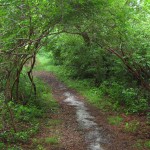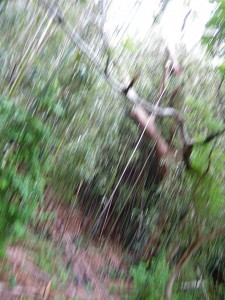Written by Jan Ketchel with a channeled message from Jeanne Ketchel.
In her beautiful description of dreaming awareness, Moya, a reader of Jeanne’s messages, posted a comment last week, asking for clarity. She relates the following process:
When I left NY to go on my journey to the standing stones in Orkney, I set my intent to ride on the wings of intent and trust, and be open to freedom. Upon returning I was thrust into a deep recapitulation. I was totally unaware of what was happening initially as I came up against the voice of cogitation: relentlessly it unraveled using the “promises” and “uncomfortable truths.” Over the last two days I was able to become aware of what was happening, and last night I set my intention to dream silently on the wings of intent. A great large eagle took me to a foreign place, and I watched as things unfolded and this blissful realization came over me without words. I actually was smiling and felt detached and at ease. I was so elated I believe I was laughing in my dream. I realized that those promises no longer have any power over me. It was like I detached from the foreign voice without having to put up a fight. I simply said: you are not me. I also remember drinking from a sweet candle. The candle was handed to me by this light woman being. She was there to help me through this passageway. She broke off a piece of candle, handed it to me, and it started to melt in my hands. I drank the melting wax. It was like pure nectar and I felt a light kindling within me and it went outwards. I was riding between parallel lines. On one side I could see my true self: the self that is free to travel through infinity, and I chose to merge my intent with my true self. I could also see the foreign mind outside of myself—still there on the other side, outside of me. I acknowledge now is now. I am still a little daunted. I feel like that light being has been in my dreams before. I recognized her and yet couldn’t remember from where. Can you ask Jeanne for further guidance on this? I can’t even formulate a question. I feel like something has really changed and am not sure what it means.
Here is what Jeanne responds when I ask her to give Moya some insight into her experiences, real and dreaming. I also include the intent that the guidance that Jeanne offers be helpful to all of her readers.
My Dear Readers, and my Dearest Moya: I must first stress that these two selves, as described in this dream, are totally compatible and appropriate aspects of self. They must meet often throughout life in order for clarity to be gained. The mysteries of life will remain unattainable, unclear and distant if these two selves do not get together to hash out the truths and meanings in life.
That being said, I also pose that this other being that Moya experiences as outside of self awareness, whom she recognizes yet cannot fully grasp, is as much self as the other two beings, one of whom exists with feet and mind planted upon that earth, the other capable of transcending the earthen heaviness—and the power of life upon that earth to keep one bound and attached—to gain clarity.
Consider the self as multifaceted, all knowing, a being capable of understanding and grasping all knowledge. This is the truth of mankind, yet in that world has he been taught to remain solidly planted. Nothing extraordinary is allowed to interfere with that solidity, that final explanation of the world as one of solid objects defined, packaged, and presented. That is one reality, the reality that is acceptable to all human beings. Yet, most human beings have also had experiences that defy reason and the world of solid objects, such as Moya has in this dream sequence.
Man has been taught that he is limited, that he must go outside his meagre self to find explanation. He has been taught to believe in the capabilities of others who are far greater than he, a mere human being, rather than accept his experiences as personal lessons of untapped potential. Man has been taught to let others carry this energy, such as the light being that Moya so graciously shares experience of. In a different world, the world where everything is possible, it is quite acceptable to be energetically multifaceted beings, simultaneously existing in different stages of awareness.
In her dream, Moya is all of these beings. She is earthbound self; aware self who is capable of detachment from that earthen self—all seeing and aware—yet is she also capable of handing herself the cup of truth. In being offered liquid light of awareness, she is being handed knowledge of deeper self, more connected to the flow of all life and all knowledge. And of course she experiences this light being as recognizable: she is self!
The process, as described by Moya, to achieve this dream awareness—recapitulation—whether cognizant of it or not, opened the door to gain greater insight into self. In facing old patterns, old means of coping—and by being dragged into awareness of the repetitiveness of the pain of such recapitulation—the first step to change was not pushed away in fear but faced, and this allowed for a transcendent split to greater awareness. It is only in acceptance of the frailties, fallibilities, and pain of truth about oneself that one will truly be allowed access to deeper aspects of self. For how can one accept the truth of greater awareness if one has not fully understood the self as earthen being first? If one cannot face pain, one cannot transcend pain.
I contend, in offering insight into the many aspects of self, that all beings are offered opportunities to achieve the stages of awareness as described by this evolving being, Moya, but one must simultaneously face the many challenges that accompany such moments of opportunity. One must push the self beyond the norm, beyond the familiar. One must ask the self to trust the process that is presented. One must follow through by facing all the fears that arise, from the most tiny and insignificant to the most astoundingly confrontative. It is only in transcending all fears that one will achieve enlightenment and be okay with being liquid light.
It is the interconnectedness of all things that awaits recognition inside you, My Dear Readers, the mergence of self with all energy. Whether you call it God or any other name, it simply means that you have all you seek within, yet are you nothing; you are simply a sip of infinity. Can you accept that? Can you leave it all behind and become a drop in the vastness of all energy? Can you totally shed your human form, let go of you, all the selves included?
Can you fully own that you are everything and yet nothing? And then can you fully become that nothing, totally detached? This is not only a dream, as Moya experiences it, it is true reality.
Thank you Jeanne, and special thanks to Moya for sharing her experiences!





